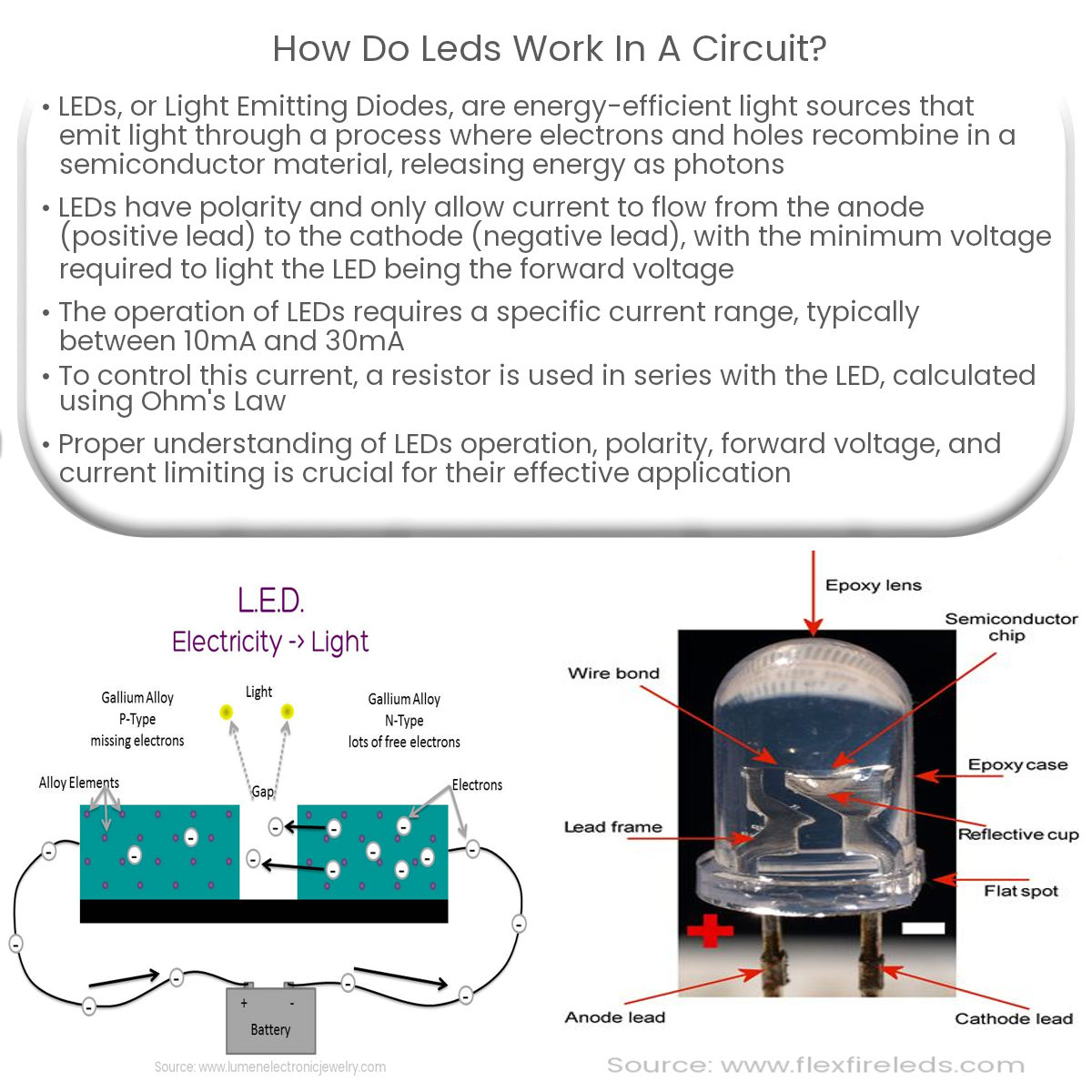LEDs work in a circuit by emitting light when current flows through their semiconductor material, requiring proper polarity and current limiting.
How Do LEDs Work in a Circuit?
LEDs, or Light Emitting Diodes, have become increasingly popular due to their energy efficiency and long lifespan. To better understand how LEDs work in a circuit, we’ll delve into their basic operation, polarity, and current limiting.
Basic Operation of an LED
At the core of an LED is a semiconductor material that emits light when an electric current passes through it. The LED is composed of two layers of semiconductor material: the N-type (negatively charged) and the P-type (positively charged). When a voltage is applied across the LED, the electrons in the N-type material move towards the P-type material, and holes (positive charge carriers) in the P-type material move towards the N-type material. When the electrons and holes meet at the junction between the two layers, they recombine and release energy in the form of photons, producing light.
Polarity and Forward Voltage
LEDs are diodes, which means they only allow current to flow in one direction. The positive lead, known as the anode, and the negative lead, known as the cathode, are connected to the P-type and N-type materials, respectively. To light up the LED, the anode should be connected to a higher voltage than the cathode. The minimum voltage required to light the LED is called the forward voltage, typically ranging from 1.8V to 3.3V, depending on the color and type of LED.
Current Limiting
LEDs require a specific current range to operate correctly, often between 10mA and 30mA. Exceeding this range can damage the LED, while insufficient current will result in dim or no light output. To control the current through an LED, a resistor is typically used in series with the LED. The value of the resistor can be calculated using Ohm’s Law:
R = (Vsupply – Vfwd) / I
where R is the resistance, Vsupply is the supply voltage, Vfwd is the forward voltage of the LED, and I is the desired current through the LED. By selecting the appropriate resistor, the current can be limited to a safe value for the LED.
Conclusion
LEDs are versatile, energy-efficient light sources with a wide range of applications. Understanding how they work in a circuit is crucial for designing and troubleshooting electronic devices that use these components. With proper polarity, forward voltage, and current limiting, LEDs can provide bright, reliable illumination for a variety of purposes.


